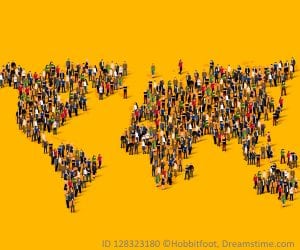Social justice is the vision that everyone deserves equal opportunities and equal social, economic, and political rights. In 2007, the United Nations proclaimed February 20th as World Day of Social Justice to engage in national activities and promote recognition of social justice around the world. Having a conversation about social justice in your classroom will touch on a wide range of themes – human rights, global citizenship, and sustainability just to name a few.
With a growing population, it is important to support efforts that improve well-being for all people, all over the world. Social justice empowers people to live healthy lives with equal opportunities – not being held back by gender, social status, or poverty. Even in 2015, we have a ways to go in securing social justice globally.
One third of the world’s population lives on less than $2 per day – that is around 2.3 billion people! Living on less than $2 a day makes it is very difficult for people to meet their basic needs, or to plan for the future. Women are disproportionally affected by poverty and gender inequity – the adult female literacy rate is 79 percent worldwide. For men, it’s 88 percent. Education increases a woman’s opportunities significantly throughout her lifetime, enabling her to build a better future for herself and her family. Equal participation in government is also social justice – currently, around 20 percent of the world’s governmental bodies are comprised of women.
Solutions to leveraging social justice around the world start with recognition and awareness but it will also require further steps and cooperative action from the entire international community. Not until all people are lifted out of poverty and given full access to social and economic opportunities will world social justice be achieved.



